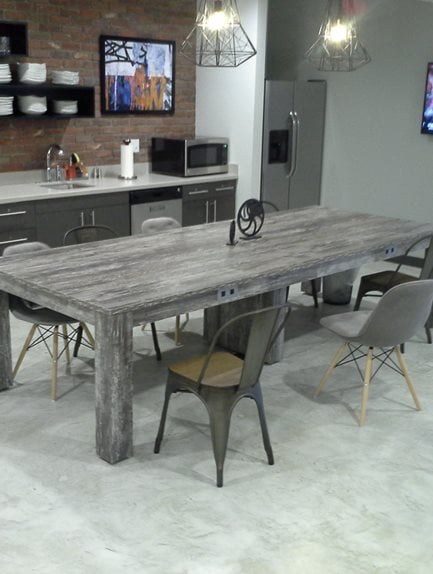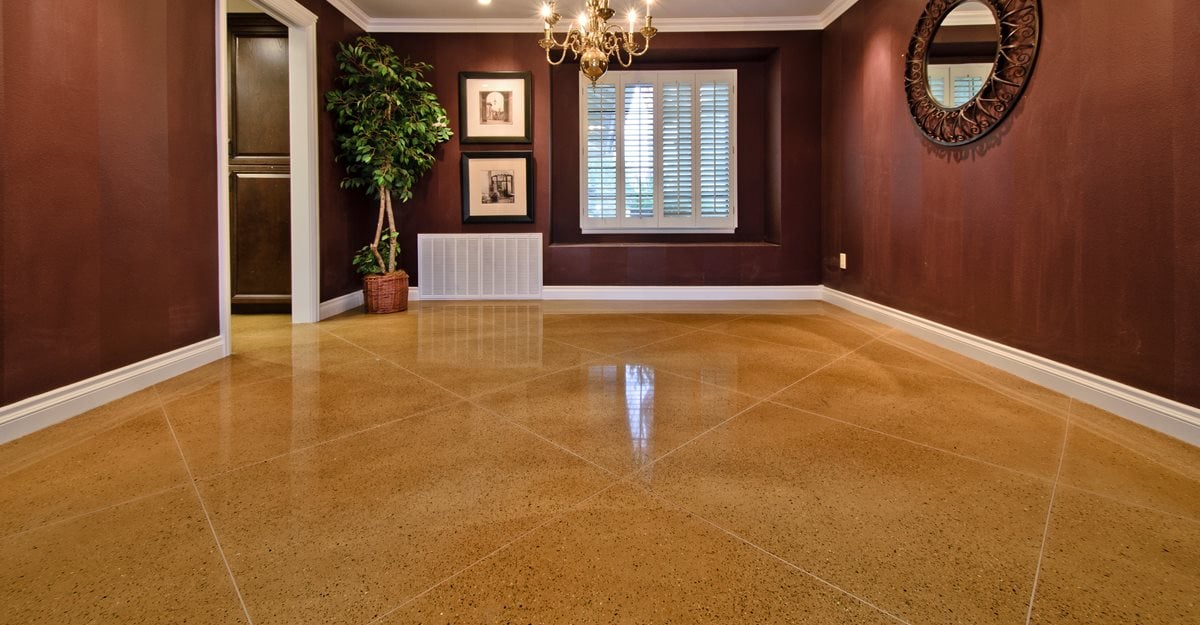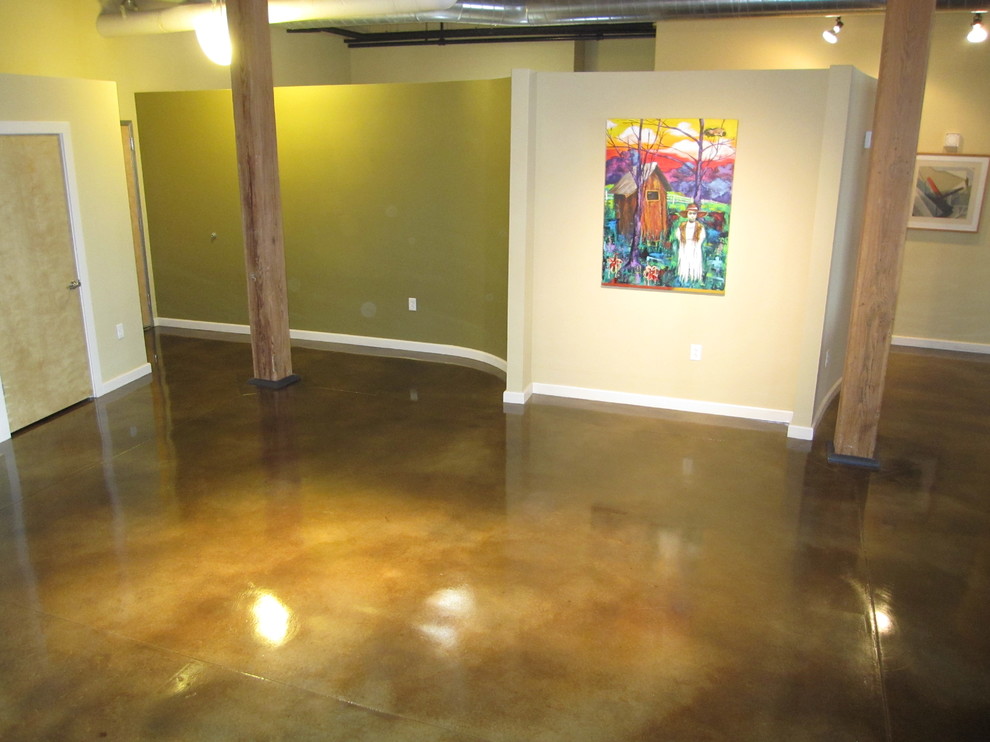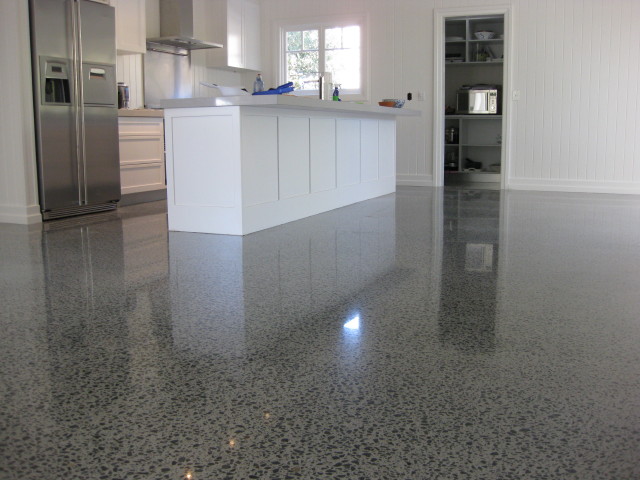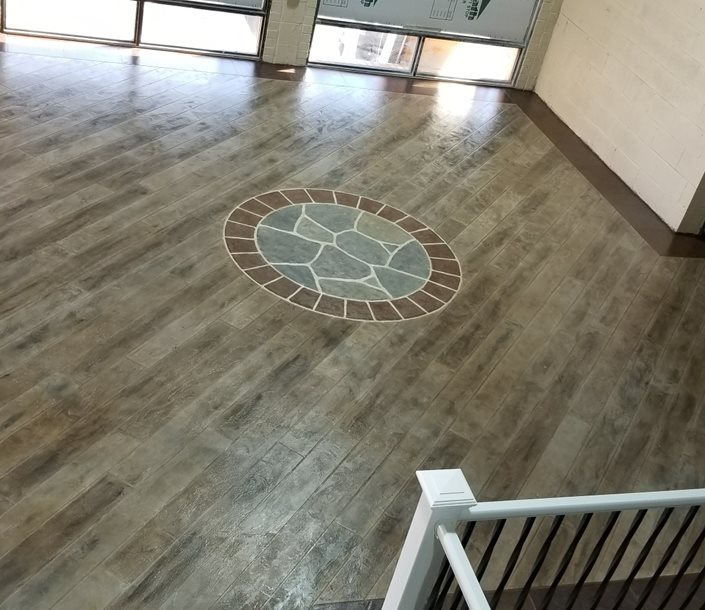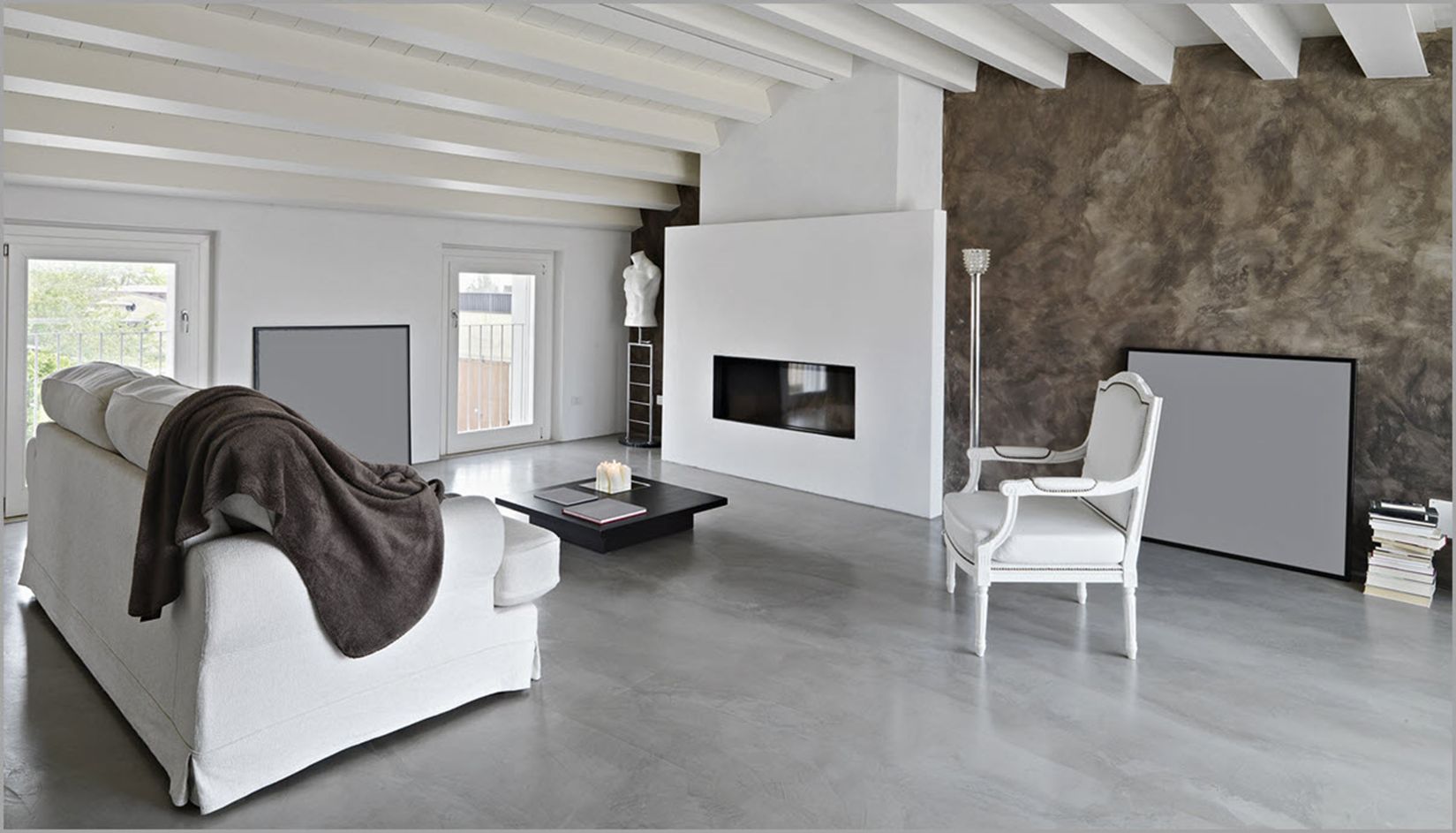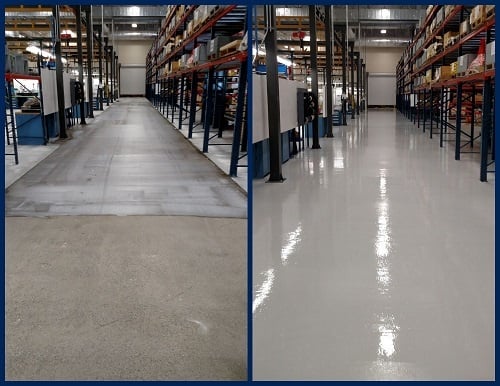The Benefits of Interior Concrete Floor Resurfacing
Interior Concrete Floor Resurfacing offers numerous benefits for both residential and commercial spaces. Here are some of the key advantages:
Enhanced Aesthetics:
One of the primary benefits of interior concrete floor resurfacing is the ability to transform the appearance of your space. Whether you have an old, worn-out floor or simply want to update the style, resurfacing can provide a fresh and modern look. With a variety of color options, decorative patterns, and finishes available, you can customize your floor to match your desired aesthetic.
Increased Durability:
Concrete floors that have been resurfaced are more durable and long-lasting. The resurfacing process involves applying a layer of high-quality concrete or polymer overlay, which reinforces the existing floor and protects it from wear and tear. This added strength makes the floor resistant to scratches, stains, and impacts, ensuring it can withstand heavy foot traffic and the demands of daily use.
Cost-Effective Solution:
Compared to completely replacing a concrete floor, resurfacing offers a cost-effective alternative. Resurfacing eliminates the need for tearing out the existing floor, which can be time-consuming and expensive. Instead, the process involves repairing any cracks or imperfections and applying a thin overlay, resulting in significant cost savings. Additionally, resurfacing reduces maintenance and replacement costs in the long run, as the new surface is easier to clean and maintain.
Improved Safety:
Interior concrete floor resurfacing can also enhance the safety of your space. By adding a slip-resistant coating or texture to the surface, resurfacing reduces the risk of accidents caused by slippery floors. This is particularly beneficial in areas prone to spills or where there is a higher likelihood of falls, such as kitchens, bathrooms, or commercial spaces.
Eco-Friendly Option:
Choosing to resurface your interior concrete floor is a sustainable choice. The process reduces waste by reusing the existing floor rather than disposing of it in a landfill. Additionally, many resurfacing materials and coatings are eco-friendly and low in volatile organic compounds (VOCs), making them safer for the environment and for indoor air quality.
Interior concrete floor resurfacing offers a range of benefits, including improved aesthetics, increased durability, cost savings, enhanced safety, and eco-friendliness. Whether for residential or commercial spaces, resurfacing is a practical and efficient solution to revitalize and transform your concrete floors.

Step-by-Step Guide to Interior Concrete Floor Resurfacing
Step 1: Preparation
Before starting the resurfacing process, it is crucial to prepare the interior concrete floor properly. Start by removing any existing flooring or carpeting. Use a floor scraper or grinder to remove any loose or damaged concrete. Clean the floor thoroughly and ensure it is free from any dirt, dust, or debris. Patch any cracks or holes with a concrete patching compound and allow it to dry completely.
Step 2: Acid Etching
Next, it is necessary to etch the concrete surface to create a proper bond for the resurfacing material. Mix an acid etching solution according to the manufacturer’s instructions and apply it to the floor using a brush or sprayer. Allow the solution to sit for the recommended amount of time, usually around 20 minutes, and then rinse it off with clean water. Make sure to wear protective clothing, gloves, and goggles during this process.
Step 3: Applying the Resurfacing Material
Once the floor has been properly prepared and etched, it is time to apply the resurfacing material. Choose a high-quality concrete resurfacer that is specifically designed for interior applications. Mix the resurfacer according to the manufacturer’s instructions, making sure to achieve a smooth and lump-free consistency.
Using a long-handled squeegee, spread the resurfacing material evenly across the floor. Work in small sections to ensure that the material is applied evenly and at a consistent thickness. Use a trowel or a broom to create a textured finish if desired. Allow the resurfacer to dry for the recommended time before moving on to the next step.
Step 4: Finishing Touches
Once the resurfacing material has dried completely, it is time to add any desired finishing touches. This could include staining the concrete to achieve a desired color or applying a sealant to enhance durability and protect the surface. Follow the manufacturer’s instructions for each finishing product and allow adequate drying time between each application.
Step 5: Regular Maintenance
To ensure the longevity of the resurfaced interior concrete floor, it is important to maintain it regularly. Sweep or vacuum the floor regularly to remove dirt and debris. Avoid using harsh chemicals or abrasive cleaners that could damage the surface. Instead, use a pH-neutral cleaner and a soft mop or cloth to clean the floor. Periodically reapply a concrete sealant to protect the surface and keep it looking its best.
Choosing the Right Materials for Interior Concrete Floor Resurfacing
When it comes to resurfacing interior concrete floors, choosing the right materials is crucial to ensure a successful and long-lasting result. There are several factors to consider when selecting the materials for this task.
1. Durability: One of the primary considerations when choosing materials for interior concrete floor resurfacing is durability. The resurfacing materials should be able to withstand heavy foot traffic, furniture movement, and potential spills without wearing down or chipping easily. Materials such as epoxy or polyurethane coatings are known for their durability and ability to withstand wear and tear.
2. Aesthetics: Another important factor is the desired aesthetics of the resurfaced concrete floors. Different materials offer various finishes, colors, and patterns, allowing homeowners or business owners to achieve their desired look. Stained concrete, for example, can provide a unique and visually appealing appearance, while coatings like epoxy can create a glossy and seamless finish.
3. Ease of Installation: The ease of installation is another crucial consideration, especially for DIY enthusiasts. Some materials, like self-leveling concrete overlays, are relatively easy to install and require minimal preparation. On the other hand, coatings such as epoxy may require more expertise and specialized tools for proper application.
4. Maintenance: It is important to consider the long-term maintenance requirements of the chosen materials. Some materials may require regular reapplication or touch-ups to maintain their appearance and functionality. Understanding the maintenance needs of the selected materials can help homeowners or business owners plan for the necessary upkeep.
5. Budget: Lastly, budget plays a significant role in material selection for interior concrete floor resurfacing. Different materials vary in cost, and it is essential to choose one that fits within the allocated budget. It is important to strike a balance between affordability and quality to ensure a satisfactory outcome.
Maintaining and Caring for Resurfaced Interior Concrete Floors
Once you have invested in resurfacing your interior concrete floors, it is essential to properly maintain and care for them to ensure their long-lasting beauty and functionality. By following some simple maintenance tips, you can keep your resurfaced floors looking pristine for years to come.
Regular Cleaning: Regular cleaning is crucial to prevent dirt, dust, and debris from scratching or dulling the surface of your resurfaced interior concrete floors. Use a soft-bristle broom or a dust mop to sweep the floors daily and remove any loose particles. For deeper cleaning, you can use a pH-neutral cleaner specifically designed for use on concrete floors. Avoid using harsh chemicals or abrasive cleaners, as they can damage the resurfaced surface.
Spill Cleanup: Promptly clean up any spills on your resurfaced interior concrete floors to prevent staining. Wipe up spills with a clean cloth or paper towel, and then use a mild detergent and water solution to remove any residue. Avoid using acidic or chemical-based cleaners, as they can etch or discolor the surface.
Protective Measures: To maintain the beauty and durability of your resurfaced floors, it is essential to take protective measures. Place doormats or rugs at entry points to trap dirt and moisture, preventing them from being tracked onto the floors. Use furniture pads or coasters under heavy furniture to avoid scratching or denting the surface. Additionally, avoid dragging or sliding heavy objects across the floor.
Avoiding Water Damage: While resurfaced interior concrete floors are generally water-resistant, it is still important to prevent prolonged exposure to standing water. Ensure that any spills or leaks are promptly cleaned and dried to prevent water seeping into the concrete. Avoid using excessive amounts of water during cleaning, and never use a steam mop or excessive water pressure, as these can damage the resurfaced surface.
Regular Maintenance: In addition to routine cleaning, regular maintenance is necessary to keep your resurfaced interior concrete floors in top condition. This includes periodic resealing to protect the surface from stains, wear, and tear. The frequency of resealing will depend on the specific product used and the level of foot traffic in the area. Consult with a professional to determine the appropriate resealing schedule for your floors.
Refinishing Concrete Floors Life of an Architect
Concrete Epoxy Floor Resurfacing/Polishing Company VA
Concrete Floor Resurfacing for DC Homes u0026 Businesses SUNDEK of
Five Different Looks for Interior Decorative Concrete Floors
Refinishing Options for Older Concrete Floors
Concrete Floor Resurfacing Services Concrete Resurfacing Contractors
Related Posts:
- Applying Concrete Floor Paint
- Non Slip Concrete Floor Sealer
- How To Paint Concrete Garage Floor
- Outdoor Concrete Floor Ideas
- Concrete Floor Covering Ideas
- Cracks In Polished Concrete Floors
- Drylok Concrete Floor Paint Colors
- Polished Concrete Floor Thickness
- Residential Stained Concrete Floors
- Cheap Concrete Floor Finishes
